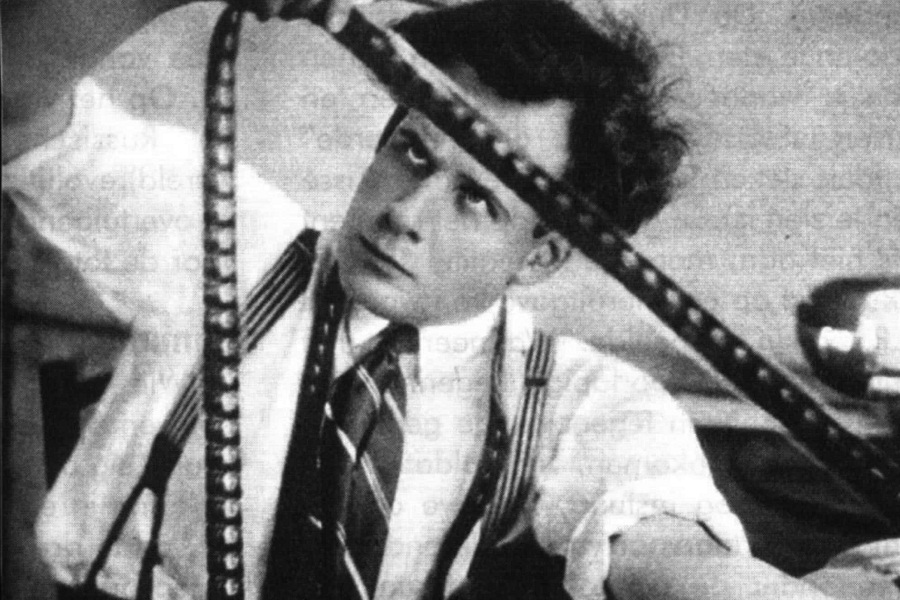
Published :
Updated :

In Bangla films, symbolic imagery portrays a particular narrative, such as a boy's transition from boyhood to manhood. If the transition is depicted with a rickshaw wheel on the screen, the boy typically grows up to become a goon or gangster. Conversely, if the transition is shown through the sewing machine wheel, the boy usually becomes a BA graduate or a respectable man. This sewing machine imagery reflects the struggles of his hardworking mother, while the rickshaw wheel signifies life on the streets marked by poverty and extreme uncertainty.
Journeys between cities such as Chattogram and Dhaka are often portrayed by showing a train platform with a sign indicating the route. To depict disastrous situations, filmmakers frequently use lightning imagery during transitions. These and many other instances demonstrate the use of montage in Bangla cinema.
Montage, crucial in film editing, pieces short shots into a coherent sequence, condensing time, space, and information for compelling storytelling.
Traditionally, in Bangla cinema, it symbolizes socio-economic and emotional dimensions. Pioneered by Eisenstein and Kuleshov, montage manipulates perceptions and emotions, influencing global and Bangladeshi filmmakers to reflect unique cultural contexts.
Montage in Bangla films, masterfully used by Satyajit Ray, Mrinal Sen, and Ritwik Ghatak, adds depth and emotional resonance. Ray's subtle storytelling, Sen's socio-political themes, and Ghatak's cultural portrayals are amplified through montage.
Zahir Raihan, one of Bangladesh's most celebrated filmmakers, employed montages to convey complex social and political messages in his films. In his 1970 film 'Jibon Theke Neya,' Raihan used montage to depict the struggle for independence, juxtaposing everyday life images with scenes of political turmoil.
In the movie 'Monpura,' directed by Giasuddin Selim, the river serves as a symbolic and physical barrier between the hero and the heroine, reflecting the complexities and challenges of their relationship.
The river must be crossed for them to meet, representing the geographical distance and the emotional and societal hurdles they face. This natural divide underscores the longing and struggle inherent in their love, emphasizing the profound connection they share despite the obstacles. With its unpredictable currents, the river mirrors their relationship's turbulent nature, filled with beauty and adversity.
In 'Shyamol Chhaya,' directed by Humayun Ahmed, the river symbolizes life during Bangladesh's Liberation War, reflecting the nation's tumultuous journey. Its movement mirrors the people's struggles, sacrifices, and resilience. The river's vastness and currents represent the conflict's scope and dangers, while its journey to the sea symbolizes Bangladesh's hard-won independence and new beginnings.
Montage is also used extensively in Bangla cinema to highlight social issues. In films like 'Matir Moina', directed by Tareque Masud, montage sequences depict the clash between traditional and modern values in rural Bangladesh. The film underscores the societal tension and conflict by juxtaposing religious education scenes with secular learning scenes.
In 'Aynabaji,' directed by Amitabh Reza Chowdhury, a scene where Chanchal Chowdhury leaves a space beside him in a rickshaw symbolizes his longing for unrequited love. The montage contrasts his inner desires with reality, highlighting his loneliness.
In another scene, an imaginary forest play abruptly interrupted by a tiger's pseudo sound represents life's unpredictability and challenges. Chowdhury's character, claiming to be a ship chef, finds solace in cooking, a tribute to his late mother. This profession symbolizes his chaotic life, with cooking as his sanctuary. These montages enrich the narrative, emphasizing themes of aspiration, resilience, and personal refuge amidst life's hardships.
In 'Durotto,' derived from Humayun Ahmed's creation and adapted for the screen by Morshedul Islam, the artful use of montage emerges as a potent narrative device.
In the film's opening sequence, a one-eyed man sporting an eye patch reminiscent of a pirate positions himself to feel the protagonist boy's cherished tree. This visual tableau serves not merely as an act of arboreal removal but as a symbolic intrusion into the boy's sanctuary of peace and companionship. Through this skilful montage, Islam adeptly facilitates themes of threatened innocence, impending conflicts, and the encroachment of harsh realities upon the idyllic domain of childhood dreams and relationships.
The list of examples demonstrating the use of montage in Bangla cinema is extensive, reflecting its importance and effectiveness as a storytelling tool.
From symbolizing personal growth and life transitions to highlighting social issues and emotional depths, montage enriches the narrative by adding layers of meaning and resonance. This technique allows filmmakers to convey complex themes succinctly and powerfully, making it a staple in Bangla film practice.
raiyanjuir@gmail.com


 For all latest news, follow The Financial Express Google News channel.
For all latest news, follow The Financial Express Google News channel.